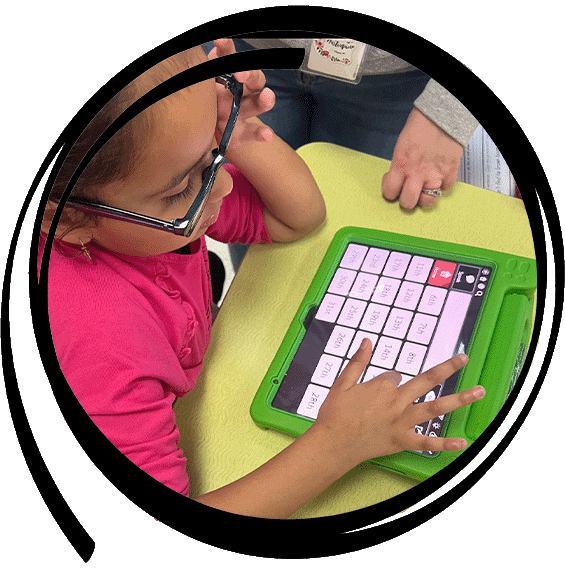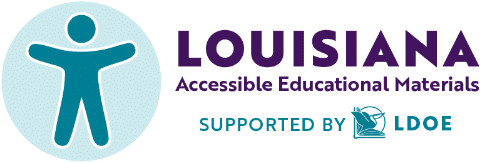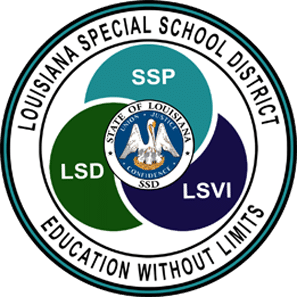The Impact of Assistive Technology and LEAs
Assistive technology has the potential to make a profound difference in learning, independence, self-esteem, and overall quality of life. In the case of students with disabilities, technology additionally serves as a vital tool offering them effective means to access the educational curriculum, enabling active engagement with their peers, and increasing progress towards their educational objectives.
The scope of assistive technology includes all academic areas, self-help, general health, executive functioning, sensory needs, fine motor skills, gross motor skills, leisure activities, vocational requirements, vision, hearing, communication, and mobility.
Louisiana Educational Agencies (LEAs) have a crucial responsibility to ensure that the process of considering and implementing assistive technology is diligently carried out during the development of each individualized education plan (IEP). Each IEP determines the appropriate special education services for each student to ensure a free and appropriate public education. If the team determines that the student requires assistive technology (AT), it is the responsibility of the LEA to provide the required devices and services accordingly.

Federal Law
IDEA defines assistive technology devices as follows:
Assistive technology device means any item, piece of equipment, or product system, whether acquired commercially off the shelf, modified, or customized, that is used to increase, maintain, or improve the functional capabilities of a child with a disability.
(IDEA 34 CFR 300.5)
IDEA defines assistive technology devices as follows:
Assistive technology service means any service that directly assists a child with a disability in the selection,acquisition, or use of an assistive technology device.
(IDEA 34 CFR 300.6)
IDEA dictates that Educational Agencies are responsible for developing policies and procedures to facilitate the following services:
(IDEA 34 CFR 300.6)
U.S Department of Education Clarification of IDEA Law and Requirements
The United States department of education released “Myths and Facts Surrounding Assistive Technology Devices and Services” in January 2024. The purpose of this document is to “increase understanding of the Individuals with Disabilities Education Act’s (IDEA’s) assistive technology (AT) requirements, dispel common misconceptions regarding AT, and provide examples of the use of AT devices and services for children with disabilities and to highlight the different requirements under Part C and Part B of IDEA.” For specific guidance regarding a wide range of AT legal concerns, please refer to the following document below for reference.
United States Department of Education. (2024, January 29). Myths and facts surrounding assistive technology devices and services. Individuals with Disabilities Education Act. Retrived from:
State Law
Bulletin 1706 addressed the IDEA mandates for consideration of special factors in sections 444 (b) and (c) titled “IEP Content and Format” in which AT devices and services are commonly required.
B. The IEP team shall also consider the following special factors and include, if needed, a statement addressing these issues on the IEP
- In the case of a student whose behaviors impede his or her learning or that of others, if appropriate, strategies including positive behavioral intervention strategies and supports to address that behavior;
- In the case of a student with limited English proficiency, the language needs of the student as those needs relate to the student’s IEP;
- In the case of a student who is blind or visually impaired, instruction in braille and the use of braille unless the IEP team determines – after an evaluation of the student’s reading and writing skills, needs and appropriate reading and writing media (including an evaluation of the student’s future needs for instruction in braille or the use of braille) – that instruction in braille or the use of braille is not appropriate for the student;
- The communication needs of the student; and in the case of a student who is deaf or hard-of-hearing, not only the student’s language and communication needs, but also the opportunities for direct communications with peers and professional personnel in the student’s language and communication mode, academic level, and full range of needs, including opportunities for direct instruction in the student’s language and communication mode; the LEA shall ensure that hearing aids worn in school by student with hearing impairments, including deafness, are functioning properly;
- Whether the student requires assistive technology devices and services based on assessment/evaluation results; if it is determined that the student requires assistive technology devices or assistive technology services, or both, they shall be made available to the student with a disability as a part of the student’s special education services, as a related service, or as supplementary aids and services; on a case-by-case basis, the use of school-purchased assistive technology devices in a student’s home or in other settings is required if the student’s IEP team determines that the student needs access to those devices in order to receive a FAPE; and
- In the case of a student who has health problems, needs to be met during the school day; such medical conditions as asthma; diabetes; seizures; or other diseases/disorders that may require lifting and positioning, diapering, assistance with meals, special diets, or other health needs;
Bulletin 1706 also addressed assistive technology and accessibility of environments in section 464 titled “Program Accessibility”
A. Program accessibility shall be ensured within existing facilities and accomplished through one of the following:
- Alteration of existing facilities; or
- Nonstructural changes; redesign of equipment; procurement of accessible educational technology; utilization of assistive technology; reassignment of classes or other services to accessible buildings;…
Bulletin 1508 reinforced the mandate to consider assistive technology for all students eligible for an IEP at the state level:
Each LEA shall ensure that assistive technology devices and/or assistive technology services are made available to a student with a disability, if required, as a part of the student’s special education, related services, or supplementary aids and services. Consideration should be given for every student with a disability who is eligible for an individualized education program as to whether the student requires assistive technology devices and/or services to receive an appropriate education.
Bulletin 1508 additionally provides detailed guidelines for the AT screening and assessment process during IEP evaluations:
The assistive technology evaluation shall be conducted by qualified professional(s) with the level of expertise necessary to address the specific areas of concern. These professionals may include, but are not limited to audiologists, occupational therapists, physical therapists, speech/language pathologists, teachers of the visually impaired, adapted physical education teachers, and assistive technology personnel:
- an observation of the student interacting with parents, teachers or peers in the educational environment during daily activities. The utilization of observational tools such as interaction checklists, criterion-based instruments, task analysis, and needs assessment, etc., is recommended;
- an interview with the primary care providers and classroom teacher(s) to determine what intervention strategies for assistive technology devices and services, if any, have already been attempted or provided and what the results were;
- an assessment of the student’s current mobility, seating, positioning, and neuromotor ability, if applicable, to determine selection techniques and the method(s) of access for assistive technology as well as to address further seating, positioning, and mobility needs;
- the results of an assessment with a variety of assistive technology devices that would be appropriate for the student. Trials with assistive technology devices could include options for both low technology and high technology solutions. The student and family should be involved in this process to ensure the likelihood that the technology that is selected will be used.
Recommendations should also include personnel who will need training and technical assistance to work with the student.

